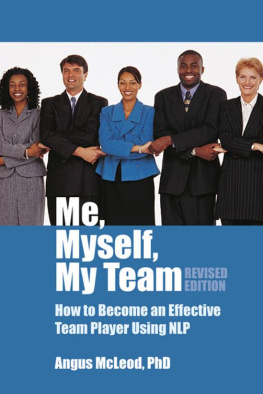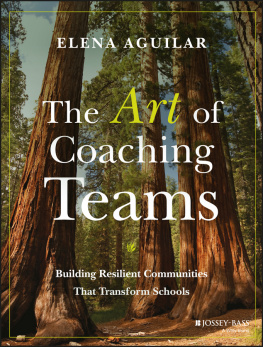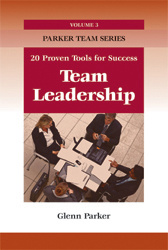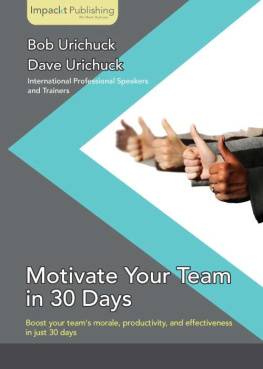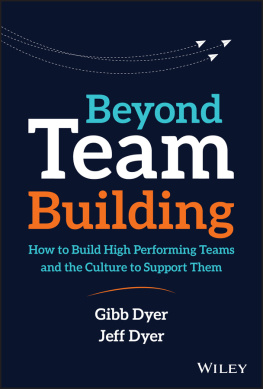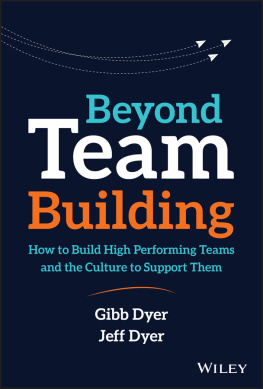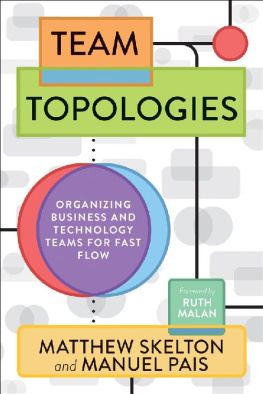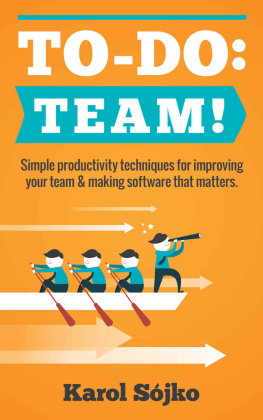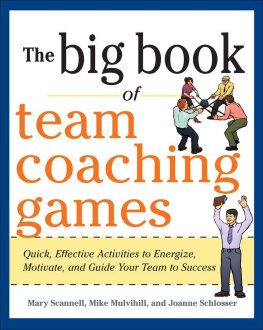I am grateful to April Curtis, who opened up her Raleigh, NC, home and office. She provided me with everything necessary for a writer. I am eternally grateful to her for her hospitality and friendship . I want to thank Lex McKee for the mind map, Salli G of Nutty Tart Grafix for the illustrations, and, last but not least, my warm thanks, appreciation and love to Obie Watson, who provided great support and encouragement in the final stages of the first edition.
I wish to thank Clare, Caroline and David at Crown House for adopting this second edition and for their successful work in bringing Me, Myself, My Team to a truly international audience. My thanks and appreciation to you all.
When one has weighed the sun in the balance, measured the steps to the moon, and mapped out the seven heavens star by star, there remains oneself.
Oscar Wilde, De Profundis
If you will, imagine two managers sitting next to each other at a business meeting. They share many similarities in background, education, skills, training and commitment. One is startlingly more effective than the other. What are the secret ingredients that make the difference?
Arising from all your competencies and everything you do is the difference you make as an individual. Add to that individuality the secret ingredients and you have startling individual performance. This book is the recipe for that difference, and there are two broad areas of cuisine. The first is flexible thinking and the second is openness to self-challenge. It is these, more than anything else, that make the performance difference: from good to startlingly effective. Put a Team together using these skills and two plus two equals ten!
The science of emotional intelligence tells us that to improve our management of others we need to start with greater self- awareness . This, then, needs to be followed by actions that manage self differently. This mental exploration and the experiences that we have tend to raise awareness of the similarities and differences between self and others, with new and fascinating perceptions. And when all these new abilities are mastered we experiment and improve our ability to influence/manage others. For that reason, there are practical explorations and information here about the different ways in which people are stimulated to action.
Throughout this book, I use the word Team with a capital T. This Team is what you define as: a small project group, a departmental Team, a group of divisional managers or CEOs.
Although the book is structured in form, I have destructured the content so that some elements of the skills are touched on before and after they are introduced. This should make some of the reading familiar and increase the recall that my readers have for the content.
Angus McLeod
Worcester
When I first made the move from academia into industry, I reinvented myself as a go-getting, success-at-any-cost manager. I was bright and self-assured and got things done. People who got in the way of my vision (of the corporate goals) were manoeuvred out. I was operating from a set of ideas and beliefs that, although apparently successful, ignored the benefits that come from real teamwork, or the two plus two equals five phenomenon. What changed me was the catalyst of pain. I rose fast and was cut down twice, in each case my patterns and competencies being outmatched by more politically agile people. With hindsight, it would have been smarter not to fail but instead to make the essential changes in thinking performance for myself. The two essential traits necessary for that to happen are openness (to challenge and new ideas) and flexible thinking it is not necessary to fail in order to learn!
Each of us is already gifted with phenomenal ability. And some of that ability is invariably trapped in set ideas and beliefs that limit our perception and the chance to perform superbly. The keys to releasing our abilities are those two traits: openness (to challenge and new ideas) and flexible thinking. This book is designed to develop openness and flexibility by offering you and your colleagues a set of tools that may be used to create your own change and success both as an individual and as a Team achiever. The first part of this book investigates the similarities/differences that we have in relation to other people. Then we explore those further to consider the similarities and differences that you have with your Team as a means of introducing some of the flexible-thinking skills that will be used throughout the book. It may be useful to read quickly through Chapter Three (whether you have a current Team or not) and complete the working examples. The book is designed as a working manual and reference work, which refers both backwards and forwards to other work and working examples.
Much of the thinking behind the book comes from current practice and ideas in coaching, learning science, neuro-linguistic programming (NLP) and coaching. My premise is that individuals operate internally as Teams. For example, I am a leader in directing and compelling myself to take business risks, but there is another part of me (my internal follower) that is fearful of doing this! And there may be Team communication going on in my head: Go for it! and Thats too risky!
This approach opens up new perceptions and learning for both the person and the Team in which he works. I would further argue that, unless each person has a properly functioning and efficient Internal Team, his performance in real Teams is questionable. My aim in sharing this book is to address the Internal Team and extend that thinking into the real (External) Team. The process is one that encourages both flexible thinking and also unique and individual solutions for each reader. My belief is that readers are more compelled to work through their own solutions than to borrow a standard system from management theory. The best answers will be your own. It is part of this thinking that I bring to my work as a coach in business, catalysing individuals to fly. With luck, the receiving Teams will also embrace this work, and the beating of individual wings will be in harmony, allowing the Team to soar beyond the limitations of other Teams. In my experience, any change in one person leads to change within the Team. Even if only one person is flying, others will quietly practise and adapt themselves for flight! Enough of metaphor! The premise I make is that culture is the result of similar behaviours, but it grows by the dynamics of similarity/difference.
The skills in this book enable you to have more choice about where you have similarity or difference with your Team (or a desired Team that you aspire to work within). When you change your behaviours they create change around you. Where others match this in the Team, you have a changed culture. Matching behaviours constitute Team culture. Your effort can therefore help the success of your organisation and is measurable by you. You can do this by noticing the changes that happen around you and whether or not these changes are in harmony with your own choice of behaviours.
We begin, then, by looking at the similarities and differences that we have when compared with others.
Summary
We think differently and are motivated differently from other people . Only when we understand our own thinking can we make choices about a particular strategy to use in a particular situation. And understanding our own thinking processes leads to realisations about the differences between ourselves and others. These realisations lead to choice and the potential for improved communication , impact, influence and Team performance.

